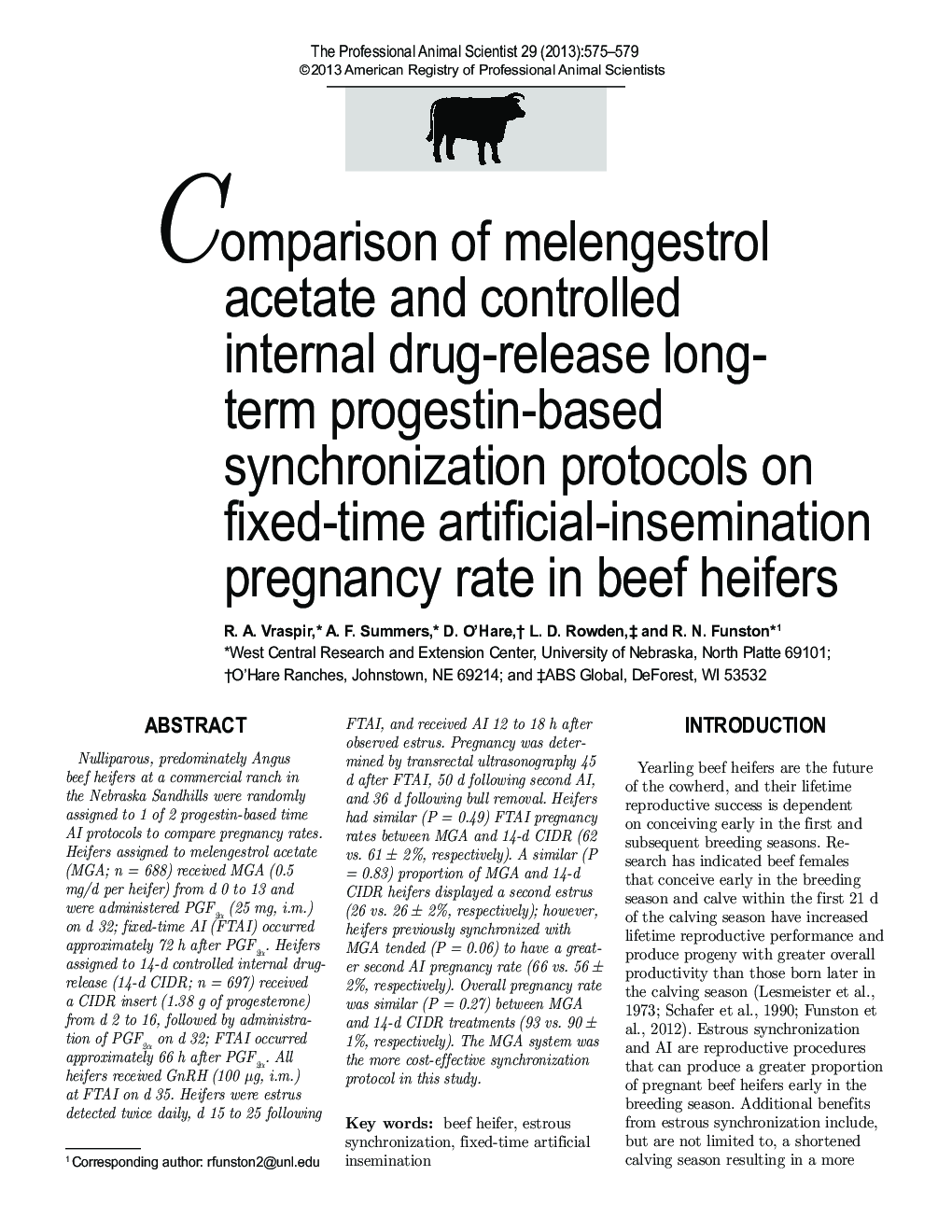| Article ID | Journal | Published Year | Pages | File Type |
|---|---|---|---|---|
| 10161843 | The Professional Animal Scientist | 2013 | 5 Pages |
Abstract
Nulliparous, predominately Angus beef heifers at a commercial ranch in the Nebraska Sandhills were randomly assigned to 1 of 2 progestin-based time AI protocols to compare pregnancy rates. Heifers assigned to melengestrol acetate (MGA; n = 688) received MGA (0.5 mg/d per heifer) from d 0 to 13 and were administered PGF2α (25 mg, i.m.) on d 32; fixed-time AI (FTAI) occurred approximately 72 h after PGF2α. Heifers assigned to 14-d controlled internal drug-release (14-d CIDR; n = 697) received a CIDR insert (1.38 g of progesterone) from d 2 to 16, followed by administration of PGF2α on d 32; FTAI occurred approximately 66 h after PGF2α. All heifers received GnRH (100 μg, i.m.) at FTAI on d 35. Heifers were estrus detected twice daily, d 15 to 25 following FTAI, and received AI 12 to 18 h after observed estrus. Pregnancy was determined by transrectal ultrasonography 45 d after FTAI, 50 d following second AI, and 36 d following bull removal. Heifers had similar (P = 0.49) FTAI pregnancy rates between MGA and 14-d CIDR (62 vs. 61 ± 2%, respectively). A similar (P = 0.83) proportion of MGA and 14-d CIDR heifers displayed a second estrus (26 vs. 26 ± 2%, respectively); however, heifers previously synchronized with MGA tended (P = 0.06) to have a greater second AI pregnancy rate (66 vs. 56 ± 2%, respectively). Overall pregnancy rate was similar (P = 0.27) between MGA and 14-d CIDR treatments (93 vs. 90 ± 1%, respectively). The MGA system was the more cost-effective synchronization protocol in this study.
Related Topics
Life Sciences
Agricultural and Biological Sciences
Animal Science and Zoology
Authors
R.A. Vraspir, A.F. Summers, D. O'Hare, L.D. Rowden, R.N. Funston,
